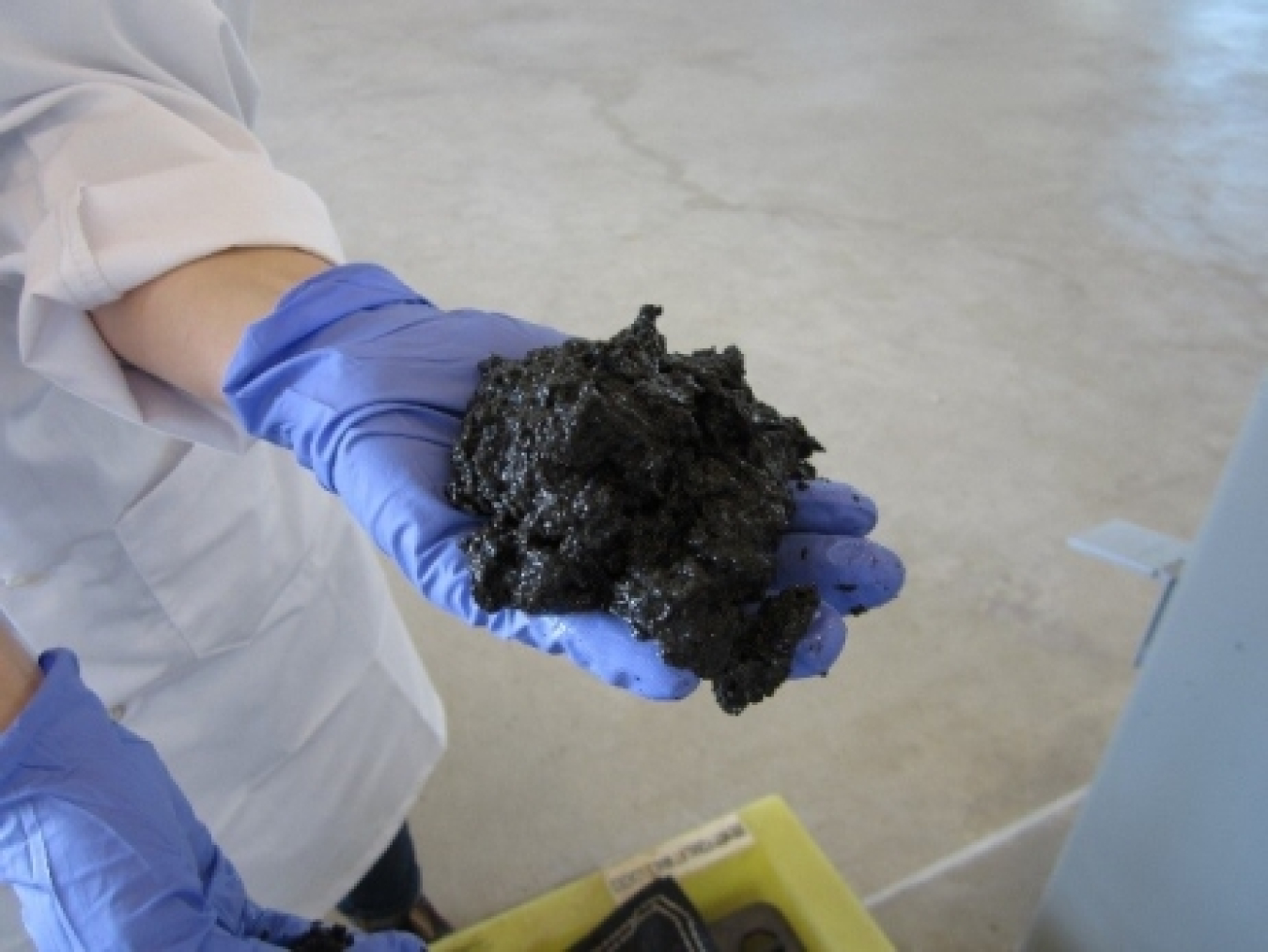This Q&A with bioenergy researchers from Pacific Northwest National Laboratory discusses creating biocrude from human waste.
Office of Critical Minerals and Energy Innovation
December 6, 2017By Erik Hyrkas, former EERE Communications team member

Sludge from Metro Vancouver’s wastewater treatment plant.
Did you know that the Energy Department is working to create biofuel from resources like human waste? In fact, the U.S. Department of Energy’s Bioenergy Technology Office works with national laboratories to research the development of biofuels and biocrude from various sources.
This Q&A with Pacific Northwest National Laboratory researchers,Corinne Drennan and Greg Kunkel, explores how scientists are developing technology to support refining human waste into biofuels and biocrude using methods such as hydrothermal liquefaction and what that means for the future.
1. What is the potential of developing biofuels and biocrude from human waste and how efficient is the process to create it?
Wastewater treatment plants across the U.S. treat approximately 34 billion gallons of sewage every day. Hydrothermal liquefaction (HTL) could produce 30 million barrels of bio-oil per year from all that sewage. By our estimates, a single person could generate two to three gallons of biocrude oil per year. The process is extremely efficient. Roughly 60% of the waste material is converted into biocrude, the process takes less than 30 minutes.
2. What applications can you see for the future of this technology? Could we see more of these wastewater treatment plants popping up all over?
The HTL system can be used to convert a broad range of organic materials from algae and agriculture waste to forest and sewage waste. We’ve even tested food wastes from a food processing facility. The process is ideally suited for wet feedstocks.
Yes, these types of reactors could be installed at wastewater treatment plants, refineries and industrial water treatment operations, and dairies across the globe. We think the technology is well suited for “mini” reactors installed at a community level where wastes and other feedstocks could be processed and refined locally instead of materials being transported to central locations and then distributed back out.
3. What are the general uses of biocrude?
Generally, biocrude can be refined similarly to petroleum. It’s great for making fuels, in particular diesel and jet fuel.
4. How does HTL work?
Using hydrothermal liquefaction, organic matter such as human waste can be broken down to simpler chemical compounds. In this example, the sewage sludge feedstock is pressurized to 3,000 pounds per square inch—nearly one hundred times that of a car tire. Pressurized sludge then goes into a reactor system operating at about 660 degrees Fahrenheit. The heat and pressure cause the waste material to break down into different fractions—biocrude and an aqueous liquid phase.
5. What’s the general perception of turning human waste into fuel in the research community and/or public?
Turning human waste into fuel isn’t a particularly new concept. Even hydrothermal liquefaction has been around for a few decades. What’s novel and intriguing with the process we’ve developed is how energy efficient it is. As mentioned, in less than 30 minutes we can produce biocrude. And, since we’re using a waste as a feedstock instead of a crop—something that costs money to grow—the ROI of the technology makes a lot of sense.
6. What makes this use of hydrothermal liquefaction so innovative?
As mentioned, the efficiency of our design is what’s so innovative about our HTL system. Other conversion systems typically require some sort of pre-processing step where the feedstock is dried. Ours does not. Other HTL systems rely on solvents for recovery of biodcrude, or they are operated in a batch configuration. These approaches are less efficient and more difficult to scale.
7. What trends do we see for the future of developing biofuels from waste?
The three evolving trends in developing biofuel from waste are:
Feedstock expansion: PNNL is exploring the viability of different wastes; system scalability; now that the technology has been proven, the next trend is transferring this knowledge to industry to enable them to scale the technology up so it can be used at wastewater treatment facilities; and refinement technology; As the use of biofuels grows, refining technologies and new uses for biocrude will be developed, similar to what took place with the petroleum industry.

